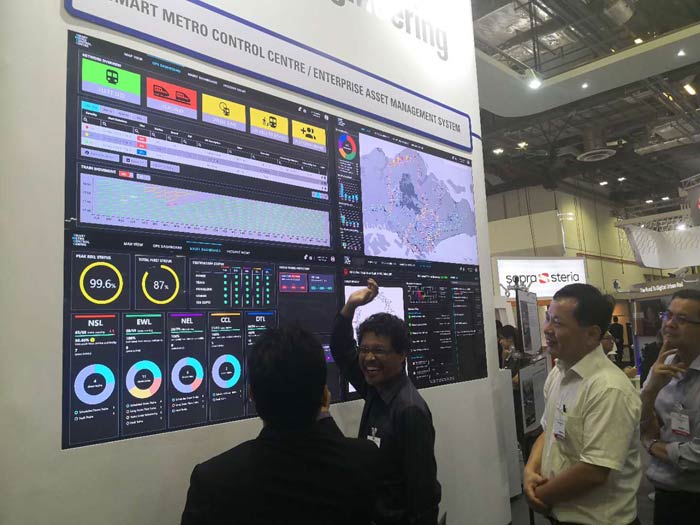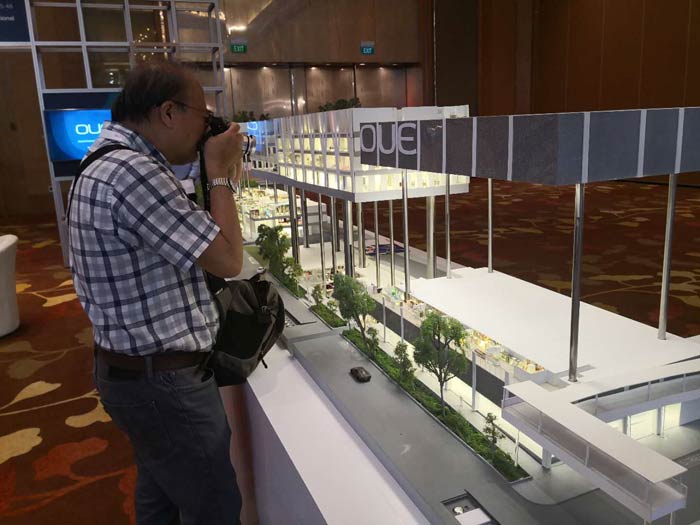

From AI-assisted transportation systems for smart cities to garbage-to-fuel energy recycling systems for zero-waste goals, China’s leading role in cutting-edge innovation and technology for urbanization amazed visitors at the biennial World Cities Summit (WCS) in Singapore.
China’s level of urban planning is second only to Singapore amid its rapid urbanization achievements which are built upon its numerous experiences across the nation and the strong execution capability of authorities, Liu Thai Ker, chairman of the Center for Livable Cities under Singapore’s Ministry of National Development, addressed in an opening speech at the China Innovation Forum during the WCS on July 11.
Meanwhile, foreign exhibitors and visitors at the summit gave China’s innovative technology the thumbs up, especially regarding China’s achievements in facial recognition and cloud computing, which are fast becoming basic living skills for Chinese urbanites.
ST Engineering, a Singaporean company that supplied the Chinese cities of Beijing and Wuhan with subway control systems, demonstrated how its technology can allow subway riders to use their face to ride the subway, and another innovative idea that allows subway passes to be read while in one's pocket.
China is pushing forward with the transformation of its national industries and global positioning through digitalization-focused innovations, which presents a vast market for companies like ST Engineering to help realize the benefit of smart city technologies, Chew Men Leong, Chief Marketing Officer at ST Engineering, told People’s Daily.

(Photo by Jiang Jie/People's Daily Online)
Next to the Singaporean company was Chinese telecommunication giant Huawei, who also showcased its video surveillance technology, which can be used to help secure public spaces and to detect fires or suspicious activities at railway stations.
Both exhibitors caught the attention of many visitors from around the world, as people marveled at the new technology and had their faces scanned.
The crowded scene was much like that of the Spring Festival travel rush in 2017, when China first tested out facial recognition for railway tickets to speed up the process of getting millions of people back home.
Chinese facial recognition technology was also repeatedly tested at multiple AI contests, the latest one being MegaFace, which saw a new record set by Chinese company TupuTech with an accuracy rate of 99.087%.
From traffic and public security monitoring to college catering services, the technology continues to take on new functions in Chinese cities and for companies. In Hangzhou, east China’s Zhejiang province, a high school even uses such technology to gauge students’ impressions in class as a way to review teaching performance.
“When you see facial recognition at some foreign exhibitions, you can’t help but think of Chinese companies such as Dahua and HKVision, whose video surveillance technologies are top-notch. But Chinese smart cities are much more than places to scan your face for a ride on the subway. We’re not bragging,” a Chinese businessman, who requested anonymity, told People’s Daily.
As early as in 2012, China’s Ministry of Housing and Urban-Rural Development launched the call to start smart city construction. As of 2015, over 500 cities—some 95% of provincial capitals and 76% of local cities - have answered the call or already started the construction, and 277 cities have joined the national-level pilot program, according to a report from Chinese Society for Urban Studies.

(Photo by Jiang Jie/People's Daily Online)
China has entered the “version 3.0 smart city,” after constructing e-government and then mobile internet. “The first two versions only accomplished the goal of getting businesses online, but the latest version will actually make cities sustainable when IoT assisted by big data becomes the core foundation for city management,” said Yan Lida, president of the enterprise business group at Huawei.
Huawei boasted the nation’s first “city-wide traffic brain” solution in Shenzhen that can monitor roads and react in real time, boosting local traffic police officers’ working efficiency by a factor of nine, according to the company’s flyers at WCS.
Chinese cloud computing giant Aliyun presented another similar city traffic brain model in Hangzhou in 2016, which can control traffic lights to help the city’s traffic run more smoothly. The company has now set up its cloud services in over 20 Chinese cities, and wants to expand the technology abroad, Leon Chen, a regional general manager of the company, introduced at the China Innovation Forum.
“The IT driven economy has become DT driven, which includes cloud, IoT, big data, and AI,” Chen noted, adding that data is becoming a new energy like water and electricity.
Meanwhile, Klaus Heidinger, head of City IT solutions at Siemens Global Center of Competence Cities, stressed in a sidelines interview that a smart city is not just built upon technology but also basic infrastructure.
Rose Wang Furong, corporate vice president of Tencent, also contributed the company’s burgeoning businesses opportunities to China’s infrastructure development, which has laid the foundation for the flourishing digital economy.
“Not every problem can be solved with a layer of IT on top of it. That’s wrong. A smart city must have good infrastructure. If you have that in place, then you can use technology to make things smarter,” Heidinger pointed out.